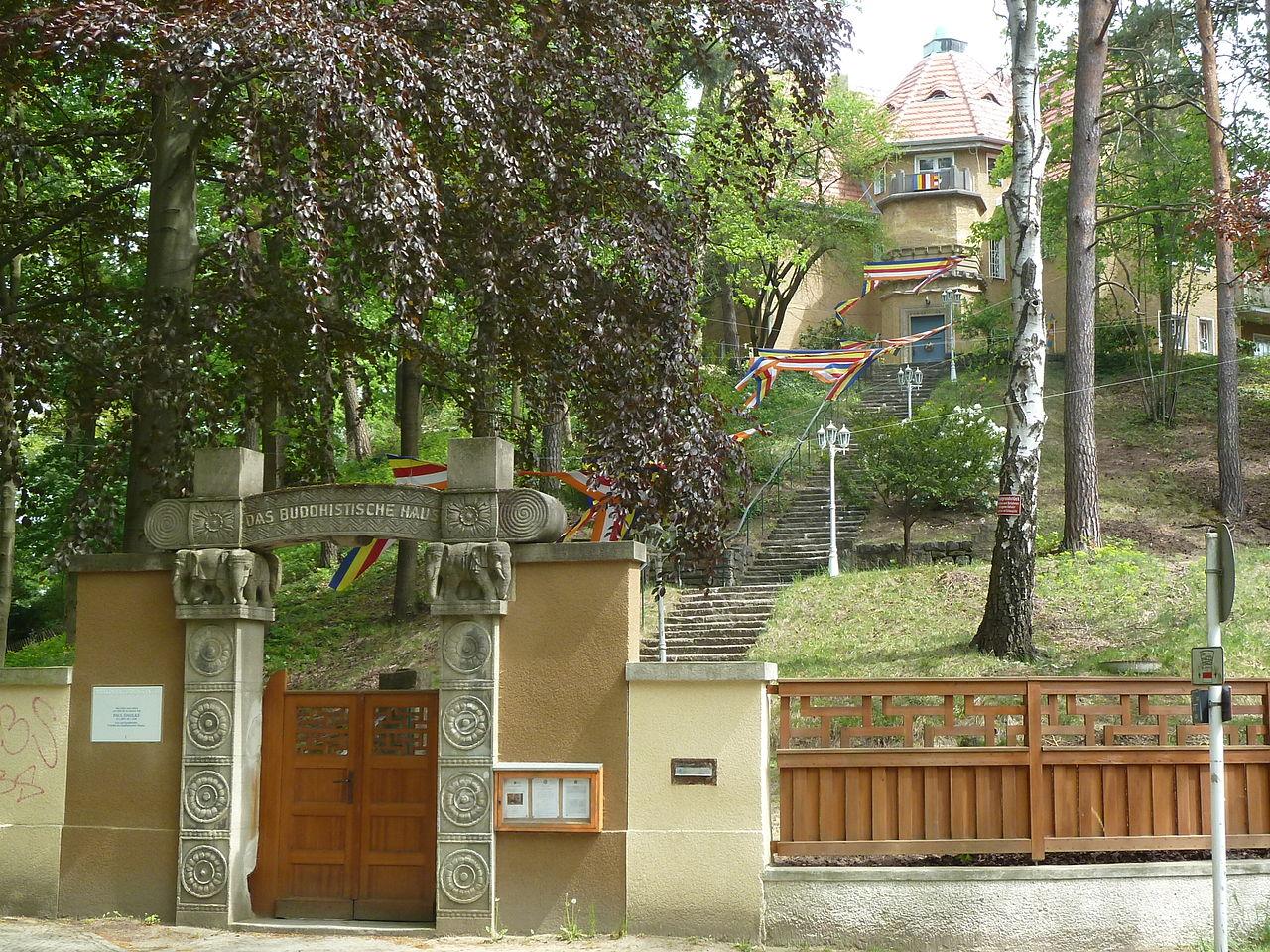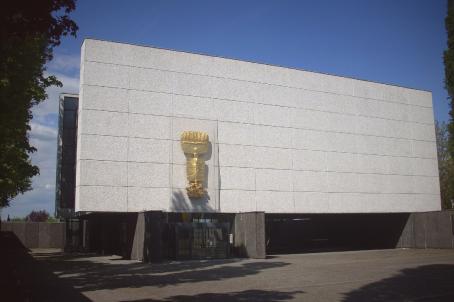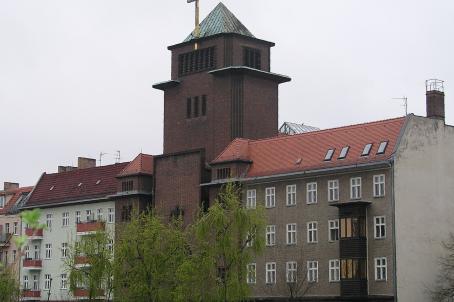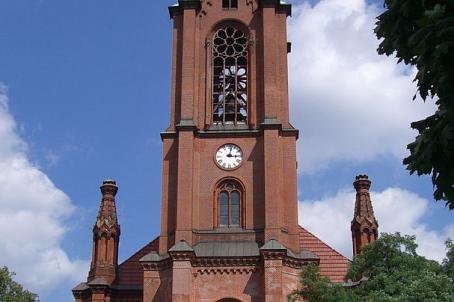Buddhist House
The Buddhist House was built in 1924, making it the oldest Buddhist temple in Western Europe. The complex was designed by Max Meyer for the physicist Paul Dahlke. The German Dharmaduta Society (GDS) acquired the property from Paul Dahlke's heirs in 1957 and transformed it into a Buddhist Vihara (monastery) with monks. Today, the "Buddhist House" is a national cultural property and is a listed building.






